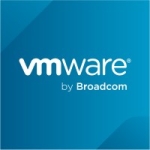Before implementing CA APM, our monitoring environment involved almost a dozen disparate tools with events duplicated in different databases, no correlation of events and no identification of the root cause. There was also inconsistency in the information in the various tools about the IT asset, making it harder to diagnose and resolve problems. This resulted in high operational costs, slow access to applications for end users and instability and unavailability of IT services.
We selected CA Technologies to consolidate the management of its IT infrastructure, replacing the various tools we used to date. To ensure a high quality implementation, we decided to partner with CA Services, which provided technical staff who speeded up the completion of the project.
We also took advantage of the experience and know-how of CA Services to help with the definition and documentation of the processes that our Command Center would employ. For us, it was not enough to have the best tool, it also needed to have a clear process and responsibility matrix so that the response to incidents was swift and proactive.
To consolidate the management of our IT infrastructure, we deployed CA Spectrum Infrastructure Manager, which enabled us to create a central events console for use in the Command Center and to monitor faults and the performance of various IT assets.
For us, the main benefit of CA Spectrum is the unification and correlation of events received across the entire IT infrastructure. This enables the operations staff to act centrally when dealing with alarms, whether from the network or from servers or applications. CA Spectrum IM monitors around 50,000 elements, which encompass servers, switches, routers, interfaces and virtual LANs.
To prevent or anticipate problems, we adopted CA eHealth Performance Manager. CA eHealth PM is used in conjunction with CA Spectrum IM to monitor servers and network elements. We specified the performance monitoring conditions for servers and network devices, and performed synthetic tests of applications using the solution’s Service Availability component. Any deviation in behaviour detected by CA eHealth PM is reported on the central console used in the Command Center. This enables proactive action to be taken to detect poor performance of an IT component, thereby helping us to take measures to prevent disruption to our IT services.
Installed on all our production servers, CA eHealth SystemEdge monitors availability and performance. It is used in conjunction with CA Virtual Performance Management (VPM) to monitor the entire infrastructure of our VMWare Virtual Center, where information on the production, homologation and development environments is managed. These two tools also send alerts to the central console used in our Command Center.
For monitoring faults and the performance of Web applications, we use CA Application Performance Management, which is integrated with the Central Console and also raises alarms. The CA NetQoS Reporter Analyzer solution is used to monitor and analyze network traffic, and to manage online and agency links. With this, it is possible to identify the source of a traffic problem on our network, allowing a decision to be made to increase or control the use of bandwidth.
Once we had consolidated the monitoring of performance and faults in IT assets and applications, we needed to establish monitoring at the services layer. With CA Spectrum Service Assurance, we now benefits from more effective management of IT services. Monitoring of service level agreements can happen in real time, as we can now view information according to the importance of the business, the quality of delivery of the service and also the inherent risk, through analysis of the root cause of current and potential problems.
We now have a single event console, which has increased the efficiency of our Command Center, improved the mean time to repair and mean time between failures indicators. We can now quickly identify the root causes of failures, detect problems not visible before, and be notified of deviations in behaviour in our IT infrastructure and applications, monitoring the availability index and obtaining improvement in the capacity management process.
Disclosure: PeerSpot has made contact with the reviewer to validate that the person is a real user. The information in the posting is based upon a vendor-supplied case study, but the reviewer has confirmed the content's accuracy.















Very valuable inputs regarding APM Dan; Thank you for sharing Ravi Suvvari